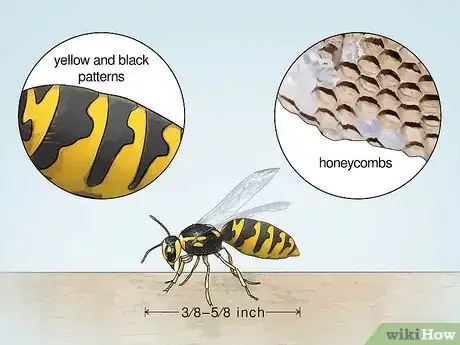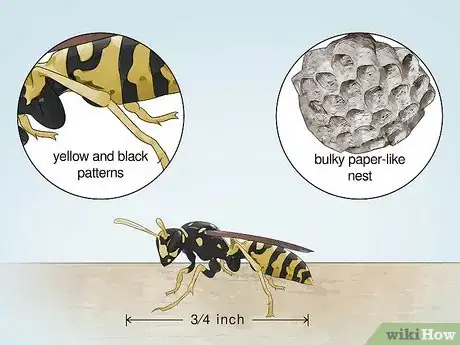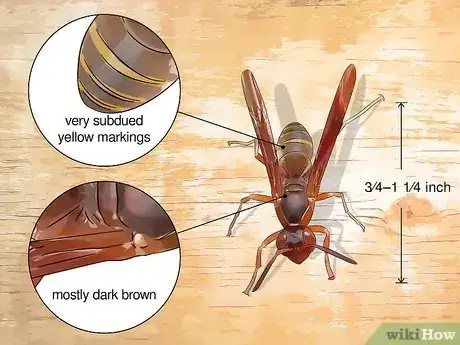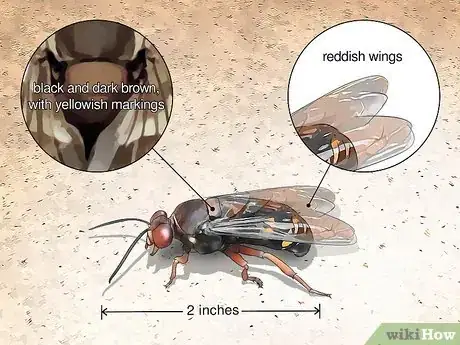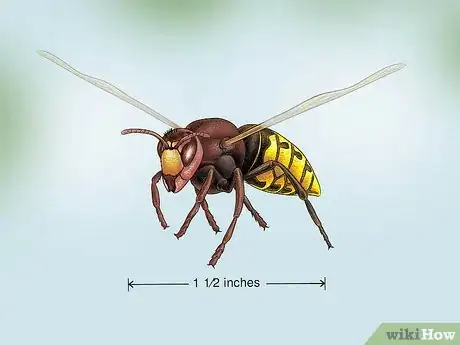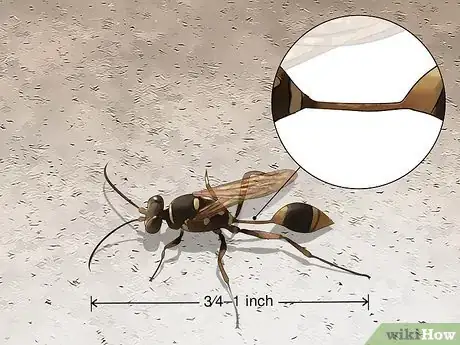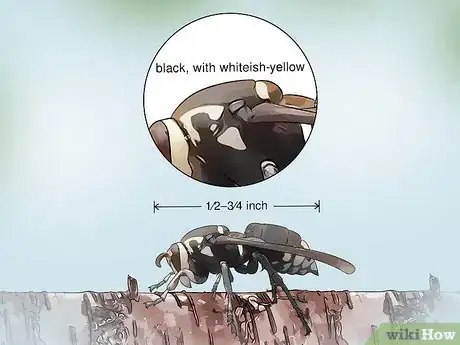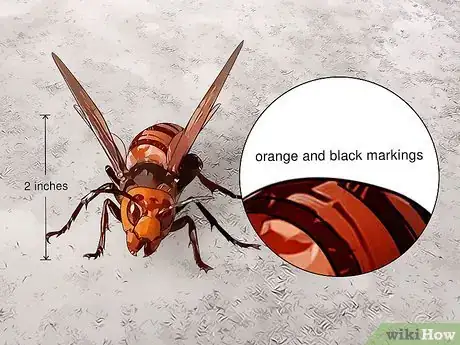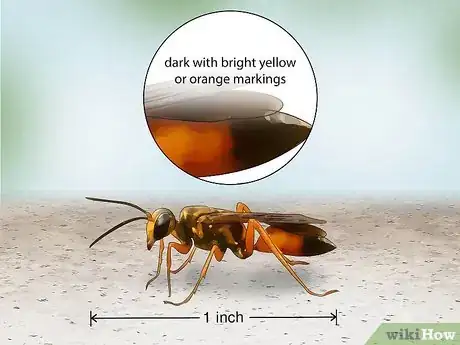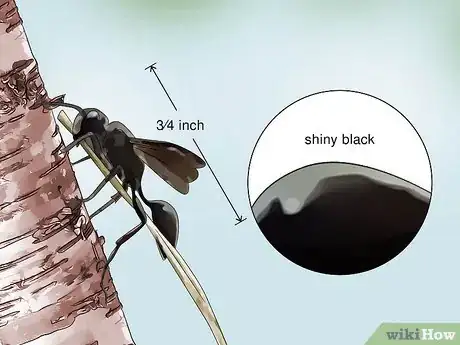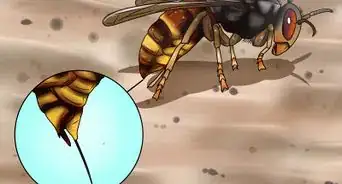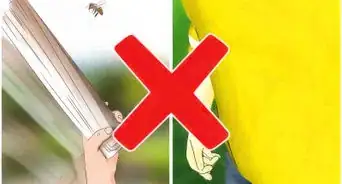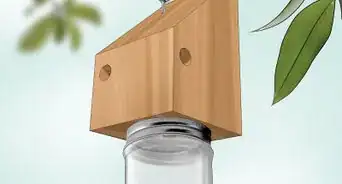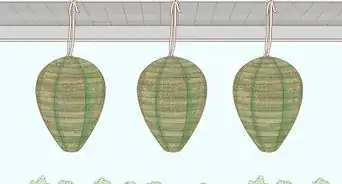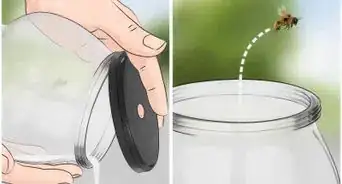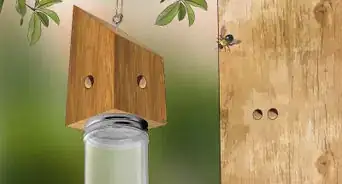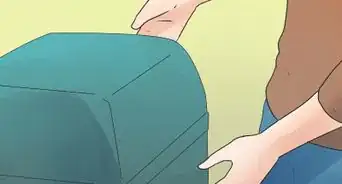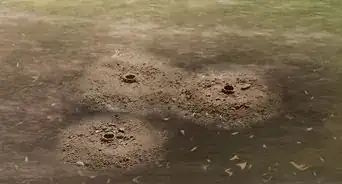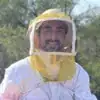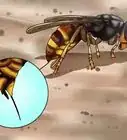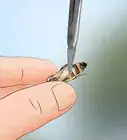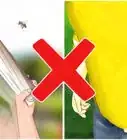This article was co-authored by Steve Downs and by wikiHow staff writer, Eric McClure. Steve Downs is a Live Honey Bee Removal Specialist, Honey bee Preservationist, and the Owner of Beecasso Live Bee Removal Inc, a licensed bee removal and relocation business based in the Los Angeles, California metro area. Steve has over 20 years of humane bee capturing and bee removal experience for both commercial and residential locations. Working with beekeepers, agriculturalists, and bee hobbyists, Steve sets up bee hives throughout the Los Angeles area and promotes the survival of bees. He has a passion for honeybee preservation and has created his own Beecasso sanctuary where rescued bee hives are relocated and preserved.
There are 19 references cited in this article, which can be found at the bottom of the page.
wikiHow marks an article as reader-approved once it receives enough positive feedback. In this case, 90% of readers who voted found the article helpful, earning it our reader-approved status.
This article has been viewed 522,447 times.
Wasps are one of the most misunderstood insects out there. In fact, most people picture one kind of wasp—the yellowjacket—when they think of a wasp! In reality, they’re one of the diverse groups of insects out there, and there are all kinds of different wasp species. While you can certainly narrow down which species you’re looking at by inspecting its colors, markings, and hive, you really don’t want to get too close. Unlike bees, wasps do not die when they sting, so keep yourself safe by inspecting from a distance!
Steps
Expert Q&A
-
QuestionHow can you tell the difference between a wasp nest and a beehive?
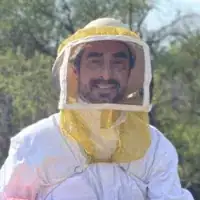 Steve DownsSteve Downs is a Live Honey Bee Removal Specialist, Honey bee Preservationist, and the Owner of Beecasso Live Bee Removal Inc, a licensed bee removal and relocation business based in the Los Angeles, California metro area. Steve has over 20 years of humane bee capturing and bee removal experience for both commercial and residential locations. Working with beekeepers, agriculturalists, and bee hobbyists, Steve sets up bee hives throughout the Los Angeles area and promotes the survival of bees. He has a passion for honeybee preservation and has created his own Beecasso sanctuary where rescued bee hives are relocated and preserved.
Steve DownsSteve Downs is a Live Honey Bee Removal Specialist, Honey bee Preservationist, and the Owner of Beecasso Live Bee Removal Inc, a licensed bee removal and relocation business based in the Los Angeles, California metro area. Steve has over 20 years of humane bee capturing and bee removal experience for both commercial and residential locations. Working with beekeepers, agriculturalists, and bee hobbyists, Steve sets up bee hives throughout the Los Angeles area and promotes the survival of bees. He has a passion for honeybee preservation and has created his own Beecasso sanctuary where rescued bee hives are relocated and preserved.
Live Bee Removal Specialist A wasp nest is much smaller than a beehive. They are usually attached to overhang structures, and they're anywhere from a few inches to about a foot around in size.
A wasp nest is much smaller than a beehive. They are usually attached to overhang structures, and they're anywhere from a few inches to about a foot around in size.
Warnings
- If you are stung, call your doctor if the sting doesn’t heal in the next few days, you get stung in your mouth or eyes, the skin around the bite starts swelling or develops pus, or if you develop flu-like symptoms.[24]⧼thumbs_response⧽
- Many social wasps, like yellowjackets, actually emit a pheromone when they feel threatened. That means that it may call for backup if they start attacking, so get out of there ASAP.[25]⧼thumbs_response⧽
- People can be allergic to wasp stings the same way they can be allergic to bee stings. If you’re allergic and you are stung, see a doctor immediately. Untreated wasp stings can cause hypertension, skin reactions, or even loss of consciousness.[26]⧼thumbs_response⧽
References
- ↑ https://content.ces.ncsu.edu/non-honeybee-stinging-insects-in-north-carolina
- ↑ https://extension.missouri.edu/publications/g7391
- ↑ https://extension.colostate.edu/topic-areas/insects/european-paper-wasp-5-611/
- ↑ https://camp-joy.org/wp-content/uploads/2020/06/Bees-and-Wasps-of-Ohio-Guide.pdf
- ↑ https://ecommons.cornell.edu/bitstream/handle/1813/43829/paper-wasp-FS-NYSIPM.pdf?sequence=1
- ↑ https://camp-joy.org/wp-content/uploads/2020/06/Bees-and-Wasps-of-Ohio-Guide.pdf
- ↑ https://www.si.edu/spotlight/buginfo/cicada-killer-wasps
- ↑ https://www.si.edu/spotlight/buginfo/cicada-killer-wasps
- ↑ https://content.ces.ncsu.edu/non-honeybee-stinging-insects-in-north-carolina
- ↑ https://content.ces.ncsu.edu/non-honeybee-stinging-insects-in-north-carolina
- ↑ https://extension.psu.edu/european-hornet
- ↑ https://texasinsects.tamu.edu/mud-daubers/
- ↑ https://www.thesca.org/connect/blog/guide-identifying-wasps-and-other-stinging-insects
- ↑ https://extension.psu.edu/baldfaced-hornet
- ↑ https://blog.nwf.org/2020/05/facts-about-the-murder-hornet/
- ↑ https://extension.psu.edu/asian-giant-hornets
- ↑ https://extension.psu.edu/asian-giant-hornets
- ↑ https://news.wsu.edu/2020/04/06/wsu-scientists-enlist-citizens-hunt-giant-bee-killing-hornet/
- ↑ https://extension.psu.edu/asian-giant-hornets
- ↑ https://aggie-horticulture.tamu.edu/galveston/beneficials/beneficial-54_great_golden_digger_wasp.htm
- ↑ https://www.canr.msu.edu/news/the_grass_carrying_wasp_a_solitary_wasp_that_builds_nests_in_unusual_places
- ↑ https://www.insidescience.org/news/move-over-beetles-new-champions-diversity-are-parasitic-wasps
- ↑ https://link.springer.com/article/10.1007/s11692-016-9397-0
- ↑ https://www.bbc.com/news/uk-england-45272344
- ↑ https://www.bbc.com/news/uk-england-45272344
- ↑ https://www.ncbi.nlm.nih.gov/pmc/articles/PMC1113072/
About This Article
To identify a yellowjacket wasp, look for 0.5 inch long wasps with yellow and black stripes on their abdomens. Hornets have a similar pattern, but are about 1 inch long. Alternatively, mud daubers can be a range of colors, from black and yellow, to all black, to metallic-blue. You may also find a cicada killer, which is a black and yellow wasp that can be 1.5 inches long. Read more to learn how to differentiate between wasps and bees!
